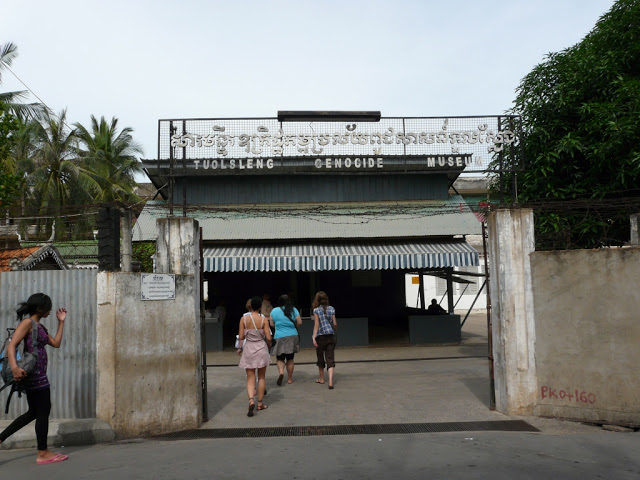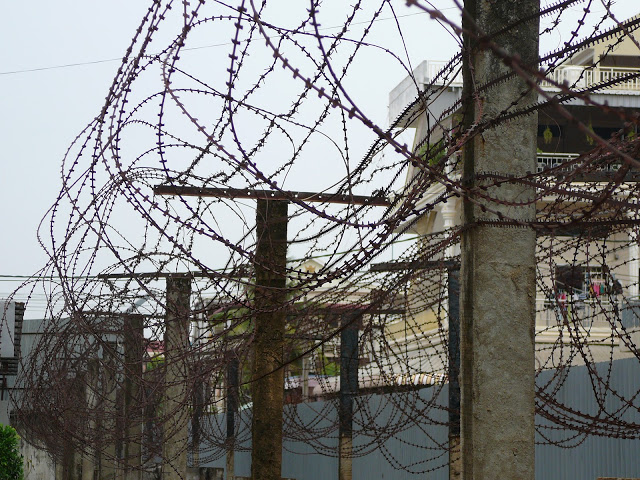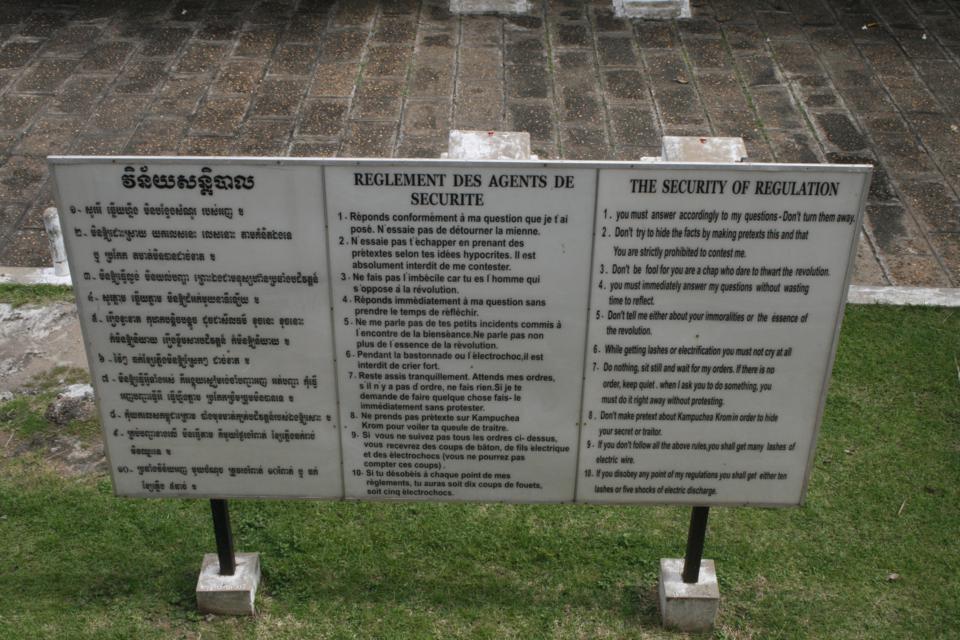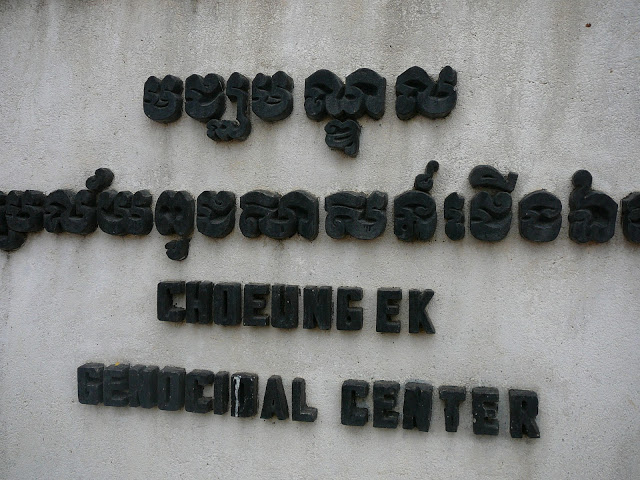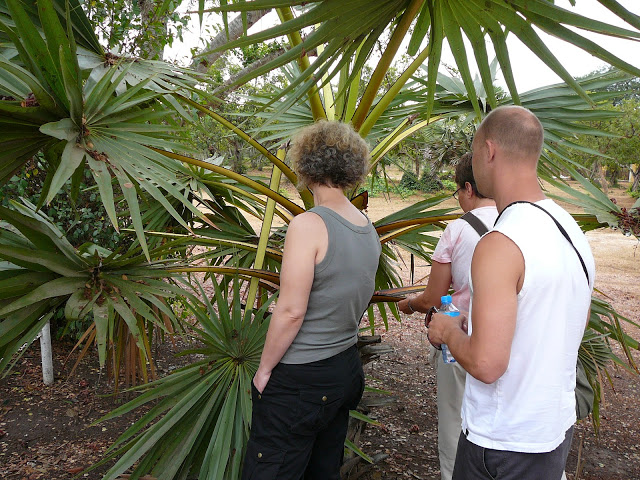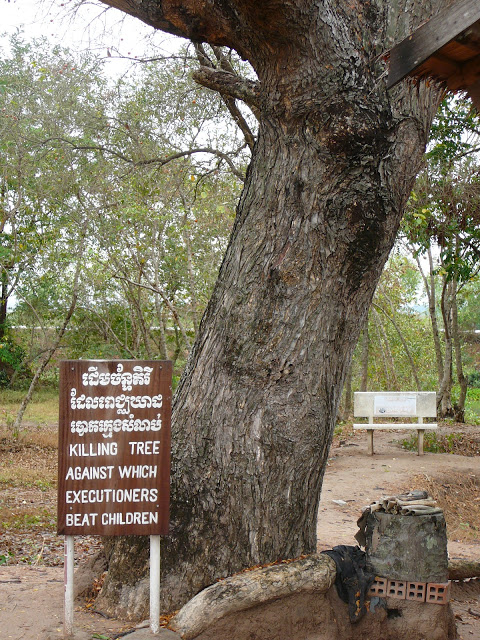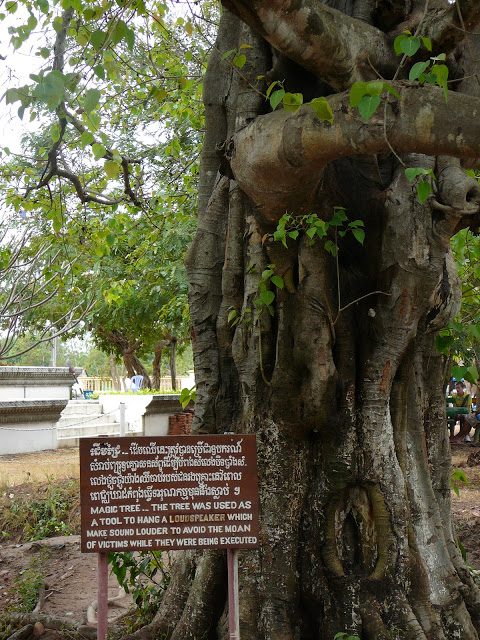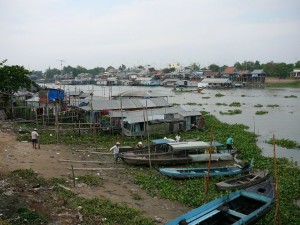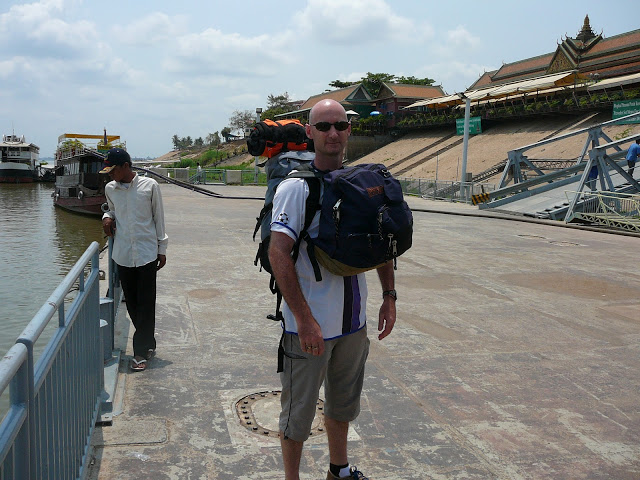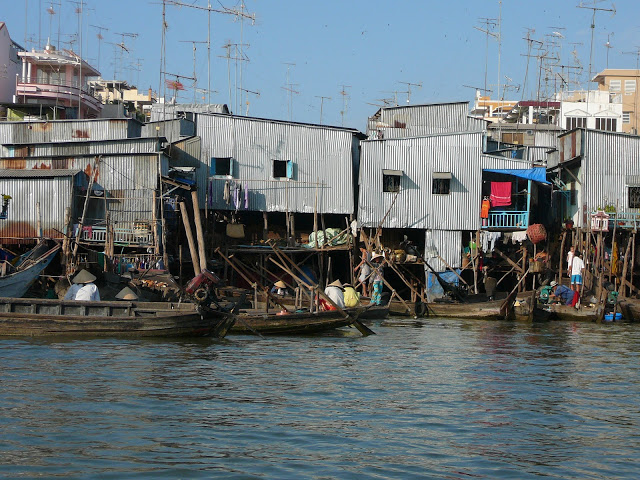S – 21 Genocidal Centre
There is part of me that does not want to write this blog. Instead I wish to leave the souls lost to rest in eternal peace, but there is also a part that screams let their voices be herd and let there be no more atrocities like this in the world again.
Rising in the morning and strangely excited to be going to the Killing Fields we quickly got breakfast sorted and made our way to our bus where Mara was waiting with out driver and another well dressed Cambodian guy.
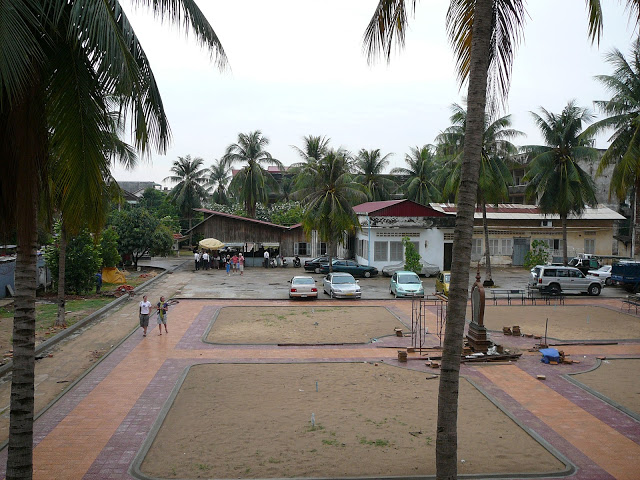
Mara our guide was to take us to a school that had been converted to a concentration camp. on the way there in the bus Mare told us that she herself wound not me going into the school grounds and that for the rest of the journey we would be taken by another guide (the well dressed guy) and she was just coming along for the ride, We feared that Mara had too many memories of what happened here during the rein of Pol Pot
We were told that today was going to be a long and hard day. not physically, but mentally. as we traveled down narrow crowded streets full of locals preparing for their day ahead our new guide for today told us the recent Cambodian history and the terrible things that Pot Pot bestowed to the people of the region. As we pulled up outside the school our guide informed us that this place will impact people in many different ways and that there will be time when you will want to be alone with you thoughts and you may even cry, this is OK and is understandable he said.
Entering the school grounds leaves you with an ere feeling that its a somber place, there is no laughter here. No thoughts of children running around the playground.
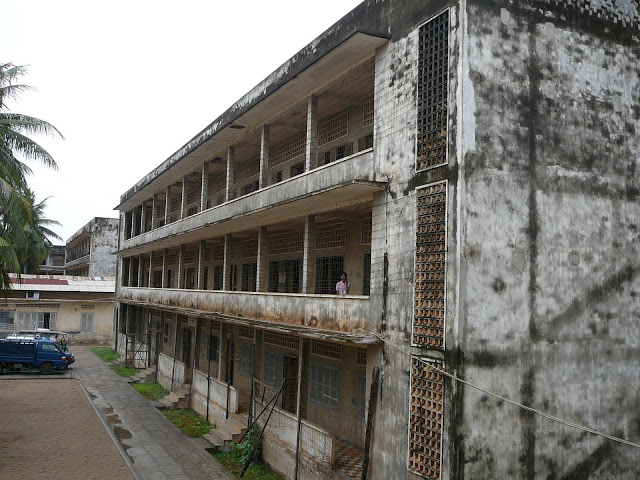
Looking up to see barbed razor wire along the border fence you know this was no ordinary school and any thoughts of teaching here was diminished to the furthermost thoughts in your mind.
This is the result of one mans quest to become the brutal ruler of a country.
Elena had mixed emotions and decided that she would not be entering the buildings here , but instead she would remain in the car park and the playground area of the complex with a couple of others from our small group.
Walking through the corridors of what was classrooms at some time the rooms were divided into smaller rooms with a crude method of bricks and mortar These were the cell blocks that held political prisoners. The rooms had no doors and were heavily guarded by the Khmer Rouge.
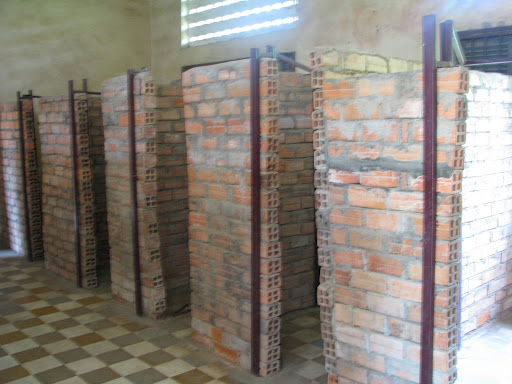
Once inside you cubicle you were not allowed to speak. these rooms were silent, if you were to make a noise you were severely punished Your family members could be in the very next cell but you wee not to mix with other political prisoners and were taken daily to interrogation rooms for “questioning and conditioning which translates to torture chambers.
Some who were lucky enough to be on the second and third levels of the school classroom block would try to take their lives by jumping of the balconies, so the soldiers placed a steel mesh over the openings so that no one could escape.
When prisoners were first brought to Tuol Sleng (S21), they were made aware of ten rules that they were to follow during their incarceration. What follows is what is posted today at the Tuol Sleng Museum; the imperfect grammar is a result of faulty translation from the original Khmer:
- 1. You must answer accordingly to my question. Don’t turn them away.
- 2. Don’t try to hide the facts by making pretexts this and that, you are strictly prohibited to contest me.
- 3. Don’t be a fool for you are a chap who dare to thwart the revolution.
- 4. You must immediately answer my questions without wasting time to reflect.
- 5. Don’t tell me either about your immoralities or the essence of the revolution.
- 6. While getting lashes or electrification you must not cry at all.
- 7. Do nothing, sit still and wait for my orders. If there is no order, keep quiet. When I ask you to do something, you must do it right away without protesting.
- 8. Don’t make pretext about Kampuchea Krom in order to hide your secret or traitor.
- 9. If you don’t follow all the above rules, you shall get many lashes of electric wire.
- 10. If you disobey any point of my regulations you shall get either ten lashes or five shocks of electric discharge.
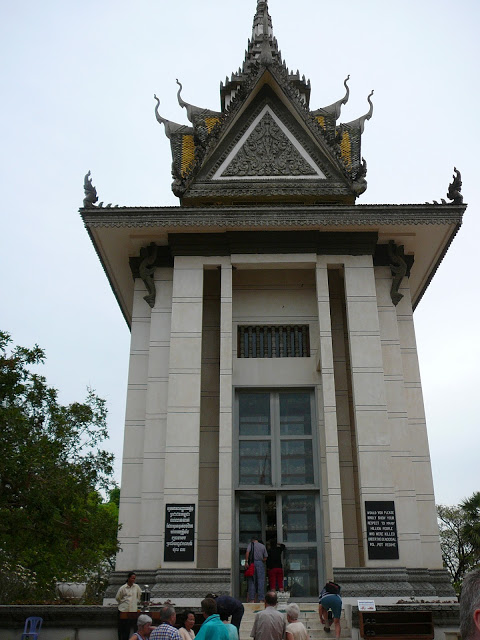
We were told that the skulls in this tower were only from a few of the mass graves here and there were thousands more still buried in the unearthed mass graves.
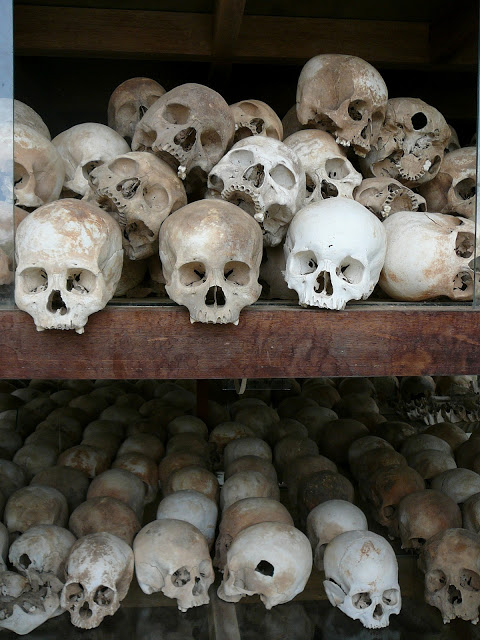
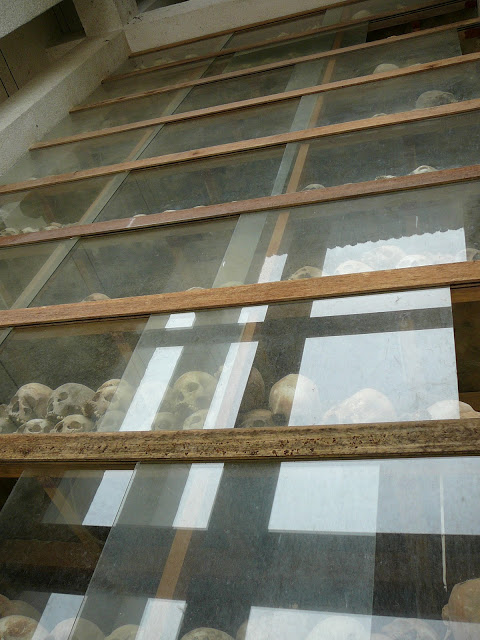
The palms above have a very sharp and jaggered stalk, our guide tells us that at The Killing Fields not many people were shot,instead they were beaten or cut to death by using this part of the palm as a human saw.
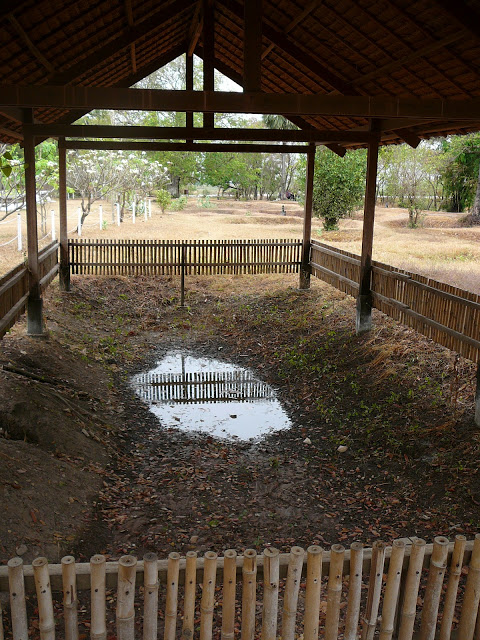
Walking the ground our guide explains the brutal and gruesome details of what happened here, then he points to the rags protruding from the ground and tells us someone is laying to rest here and that you can find clothing in the mud after monsoon season every year, as her examines the ground he bends down and picks up a small fragment of tooth to show us. Elena and I loose it and just have to walk away to gather our emotions once again.
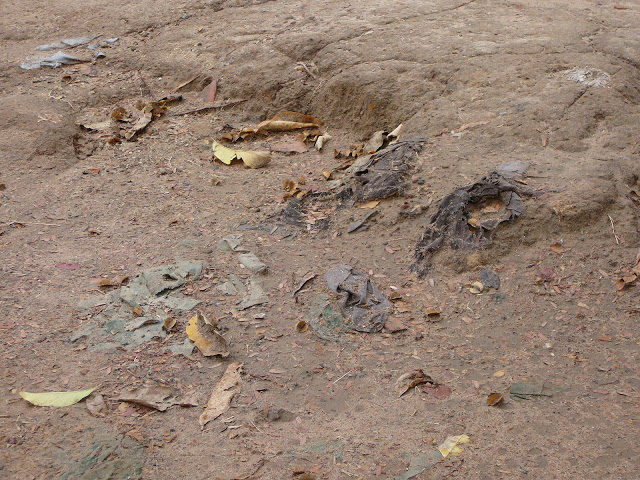
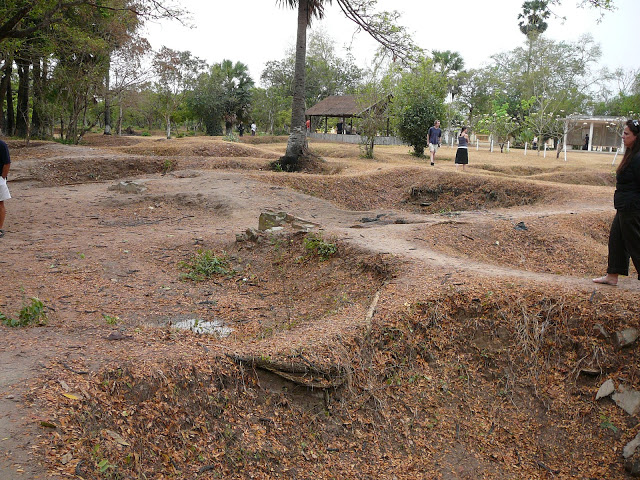
Leaving here couldn’t come soon enough, the tour was long enough to and informative enough to give us a sense of relief that were we live we are the lucky ones. This madness hapened in MY lifetime, not that long ago. May all who perished in the mad time rest in eternal piece as you story is told you will never be forgotten.
Links
